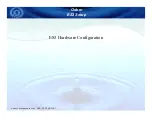
ENG
14
Page
of 36
DT_0006 Issue 15
A Global Leader in Respiratory Solutions
specific and are detailed in the Site Manual per study. The following
are design features/requirements of the VitaloJAK:
1. The subject may press event buttons to register events
during the recording session, or to mute the device, as
instructed by the technician.
2. The subject may unclip or adjust the pouch if required for
comfort but may not remove the device from the pouch.
The zip tie fitted on the pouch may only be fitted and
removed by the healthcare professional. If required for
comfort overnight, the pouch may be placed on a bedside
locker, with the audio microphone clipped to the lapel of
the user’s nightclothes or edge of the pillowcase.
3. The chest sensor must remain in place for the entire
recording period.
4. The device must be kept dry.
5. The VitaloJAK, chest sensor and air microphone must not
be worn in the shower or bath during a recording.
6. The subject should try to avoid noisy environments while
wearing the VitaloJAK device. For example, the cinema, driving
with the windows down, the gym, or using the hair dryer.
3.4. Finishing a Cough Recording
1. The device automatically powers down after the full
recording is complete. (Duration is set according to the
study requirement).
2. When recording has stopped the screen displays
‘COMPLETE’ for 5 seconds and shows recording duration
in the format hh:mm:ss. The LED light on the front of the
device shows a solid green light.
3. The VitaloJAK device must be checked on return to the
clinic to ensure the recording has stopped.
Note:
The device, chest sensor and air microphone may only be
removed from the subject when the indicator light is solid green
.
4. Unclip the air microphone from the subject’s clothing and
detach the chest sensor.
Note:
Using clean water or saline solution softens the adhesion of
the hydrocolloid on the chest sensor and tape, making removal easier
and reducing the risk of skin damage.
Содержание VitaloJAK 7100
Страница 36: ......















































